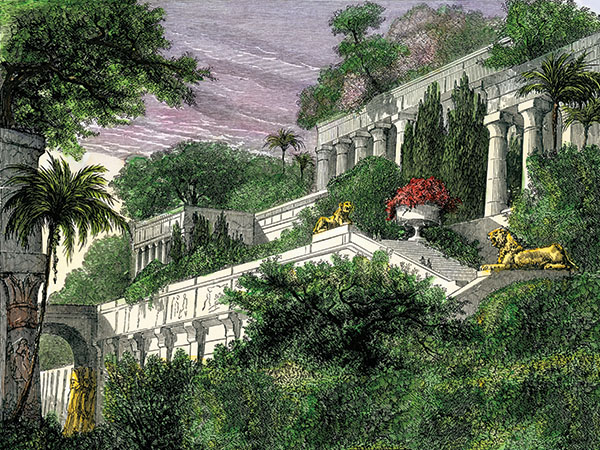Top down green buildings

AET9RN Hanging Gardens of Babylon in ancient times
Green roofs—solar, garden and combination—are making their way across the country, with the latest ordinance now in effect in Denver, Colo. As owners and operators assess what such measures add to the cost of multifamily construction and retrofits, many wonder about the benefits, detriments and pay-offs of this latest regulatory trend.
Green roofs are nothing new. The first were constructed around 500 B.C. The Hanging Gardens of Babylon are one of the Seven Wonders of the Ancient World. Centuries later, Europeans insulated their roofs with sod to keep homes cool in the summer and warm in the winter. Today, Germany is the leader in green roofs—12 percent of all its flat roofs are green, a number growing by 10 to 15 percent each year.
While green roofs can include both solar and vegetation, most recent laws specifically mandate garden roofs.
Dreaded split incentive
As more cities work to meet their mandated conservation thresholds, looming deadlines have caused some to replace incentives and rebates with laws and mandates.
In 2016, San Francisco became the first U.S. city to incorporate green roof requirements, following rules mandating solar.
Denver residents voted in its Green Roof Initiative even though developers estimated that green roofs would add costs of $15 per sq. ft. and more to roofs, with slow or no fiscal recovery. And while the benefits of garden roofs are environmental and social, their up-front costs are borne by developers. Further complicating apartment business models is the fact that the new Denver rules apply retroactively to product already in the pipeline.
Historically, incentives have provided some balance to the cost equation, making it possible for builders to make deals pencil financially. Regulations, on the other hand, can be burdensome and may create financial models that do not work, thereby impeding development.
Carnegie Melon [1] research suggests that, while green roof installation and maintenance costs more, the social return to some apartments may be favorable. Property location, climate, cost of energy and type of green roof are all important factors in achieving a positive payoff model.
Yet, it’s a moving target. While not all locations currently provide good financial models for green roofs, technology, costs, and processes continue to evolve. The technology could eventually mature to be cost effective on a wider scale, while providing social benefits in presently tough-to-pencil climates.
Value proposition
Not all green roofs are the same. Planted roofs are classified by soil depth, load capacity and function. Extensive green roofs may include thinner soil depths, meaning less weight, expense and maintenance. Intensive green roofs are built with deep soil and many layers. They are more costly and require significantly higher maintenance. A combination of solar panels and vegetation has been shown to improve the performance of both.
There are property owner advantages to green roofs: Rooftop gardens provide greater control of storm water runoff, deliver a longer lifespan over asphalt and provide credits toward LEED and other green certifications.
Benefits to residents include better building insulation from climate and noise (10 to 30 percent, per the EPA) and, in some cases, community garden features. Urban neighborhoods benefit from a reduction of the heat island effect, improved air quality through increased oxygen/carbon dioxide exchange, and biodiversity that provides spaces for birds, insects and wildlife.
Green roofs offer a longer useful life than conventional roofs through the protection of the waterproof membrane from ultraviolet light. Plants and the substrate act as a natural barrier from weather. The green roofs of Rockefeller Center in New York City still have the same waterproofing membranes as were installed in the 1930s.
It’s hard to know how Denver’s Green Roof Initiative will affect the city’s rental market. Economist Greg Willett with RealPage has projected another 12,000 apartments to come online this year. Residents absorbed most of last year’s new inventory, holding the city’s occupancy rate at 94.3 percent.
Denver’s Initiative requires that all new buildings constructed after the first of this year dedicate a portion of their roofs to green space. Existing residential buildings greater than 25,000 sq. ft and over 4 stories must add green space at the time of normal roof replacement.
[1] cmu.edu/gdi/docs/cost-effectiveness.pdf
Historical perspective
- March 2024
- February 2023
- July 2022
- March 2022
- June 2021
- February 2021
- August 2020
- February 2020
- July 2019
- April 2019
- June 2018
- April 2018
- October 2017
- May 2017
- November 2016
- June 2016
- November 2015
- June 2015
- September 2014
- June 2014
- April 2014
- December 2013
- July 2013
- December 2012
- July 2012
- October 2011


